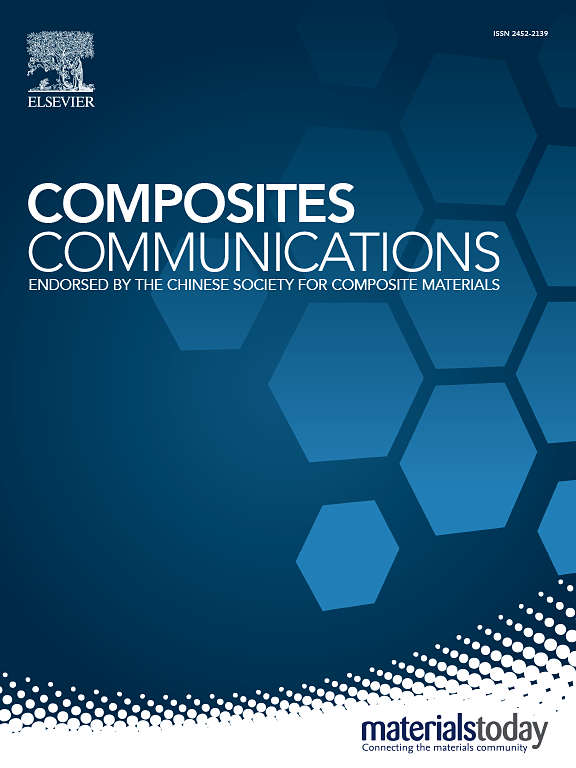Armor strategy enables high temperature anti-swelling performance of 2D material based membranes by pre-protonation
IF 6.5
2区 材料科学
Q1 MATERIALS SCIENCE, COMPOSITES
引用次数: 0
Abstract
Swelling significantly limits the performance and practical applications of two-dimensional (2D) membranes in aqueous environments. Here, we present an innovative "armor strategy" to enhance the anti-swelling performance of negatively charged 2D membranes, using vermiculite membranes (VM) as a model system. By spin-coating polyethyleneimine (PEI) onto the membrane surface and cross-linking with trimesoyl chloride (TMC), a robust protective layer was formed. The resulting VM-PEI-TMC membrane (VPTM) exhibits remarkable swelling resistance, with a swelling rate of only 0.83 %, compared to 23.70 % for unmodified VM. Practical applications of VPTM in ion sieving, dye rejection, and high-temperature operations demonstrated stable performance, with rejection rates of methylene blue (MB), rhodamine B (RB), and potassium ferricyanide (PF) exceeding 95 % at 80 °C. Furthermore, the universality of the armor strategy was established by applying it to graphene oxide membranes (GM), achieving a swelling rate reduction from 55.93 % to 5.02 %. These results highlight the versatility and effectiveness of the armor strategy, providing a promising pathway for developing high-performance, anti-swelling 2D membranes for environmental and energy applications.
装甲策略通过预质子化使二维材料基膜具有高温抗膨胀性能
膨胀极大地限制了二维(2D)膜在水环境中的性能和实际应用。在这里,我们提出了一种创新的“护甲策略”,以蛭石膜(VM)为模型系统,增强带负电荷的二维膜的抗膨胀性能。通过在膜表面旋涂聚乙烯亚胺(PEI)并与三甲基氯(TMC)交联,形成坚固的保护层。所得VM- pei - tmc膜(VPTM)具有显著的抗溶胀性,溶胀率仅为0.83%,而未改性VM的溶胀率为23.70%。VPTM在离子筛分、染料截除和高温操作中的实际应用显示出稳定的性能,在80℃时,亚甲基蓝(MB)、罗丹明B (RB)和铁氰化钾(PF)的截除率超过95%。此外,通过将其应用于氧化石墨烯膜(GM),建立了装甲策略的通用性,实现了膨胀率从55.93%降低到5.02%。这些结果突出了装甲策略的多功能性和有效性,为开发高性能、抗膨胀的二维膜提供了一条有希望的途径,用于环境和能源应用。
本文章由计算机程序翻译,如有差异,请以英文原文为准。
求助全文
约1分钟内获得全文
求助全文
来源期刊

Composites Communications
Materials Science-Ceramics and Composites
CiteScore
12.10
自引率
10.00%
发文量
340
审稿时长
36 days
期刊介绍:
Composites Communications (Compos. Commun.) is a peer-reviewed journal publishing short communications and letters on the latest advances in composites science and technology. With a rapid review and publication process, its goal is to disseminate new knowledge promptly within the composites community. The journal welcomes manuscripts presenting creative concepts and new findings in design, state-of-the-art approaches in processing, synthesis, characterization, and mechanics modeling. In addition to traditional fiber-/particulate-reinforced engineering composites, it encourages submissions on composites with exceptional physical, mechanical, and fracture properties, as well as those with unique functions and significant application potential. This includes biomimetic and bio-inspired composites for biomedical applications, functional nano-composites for thermal management and energy applications, and composites designed for extreme service environments.
 求助内容:
求助内容: 应助结果提醒方式:
应助结果提醒方式:


